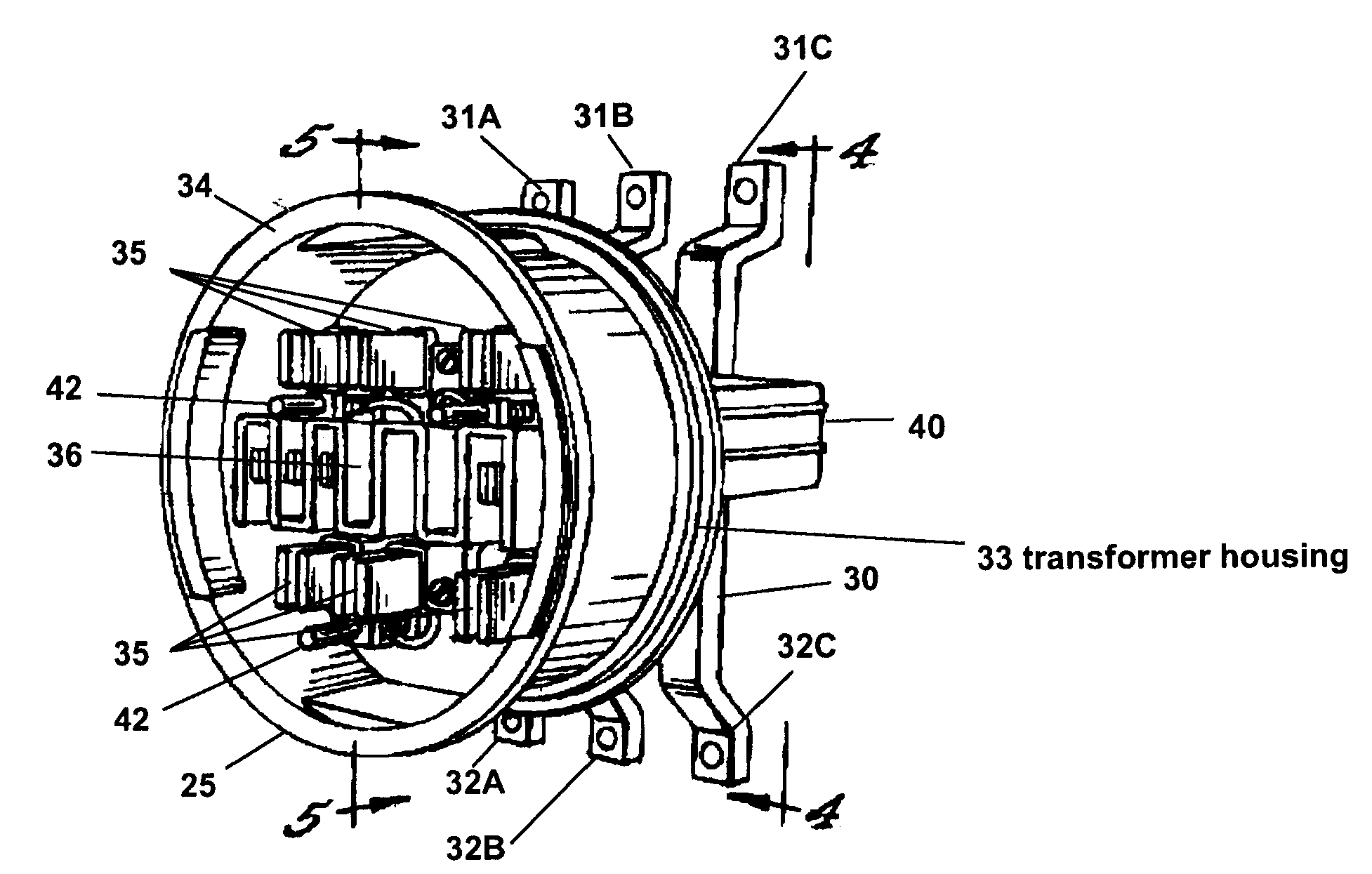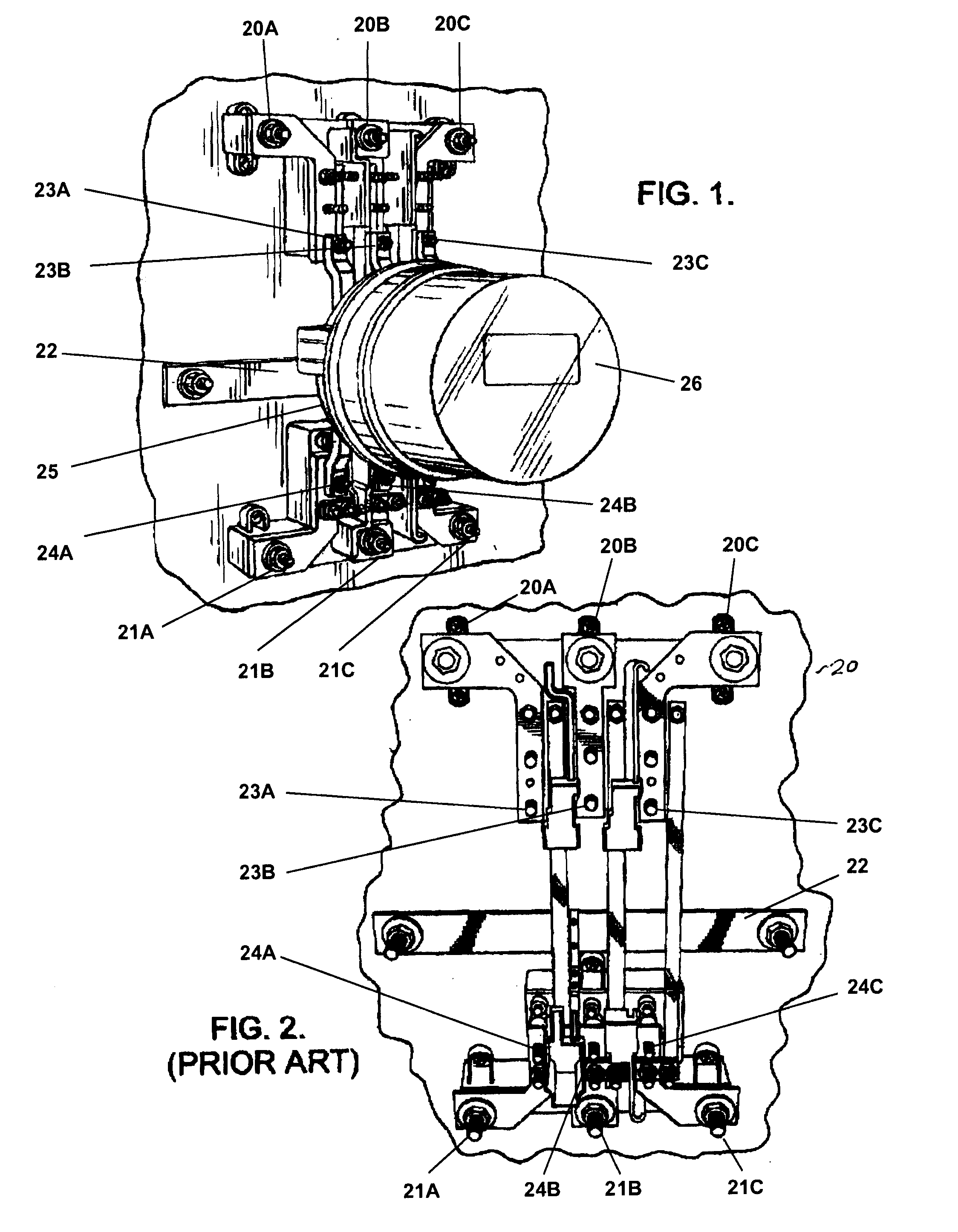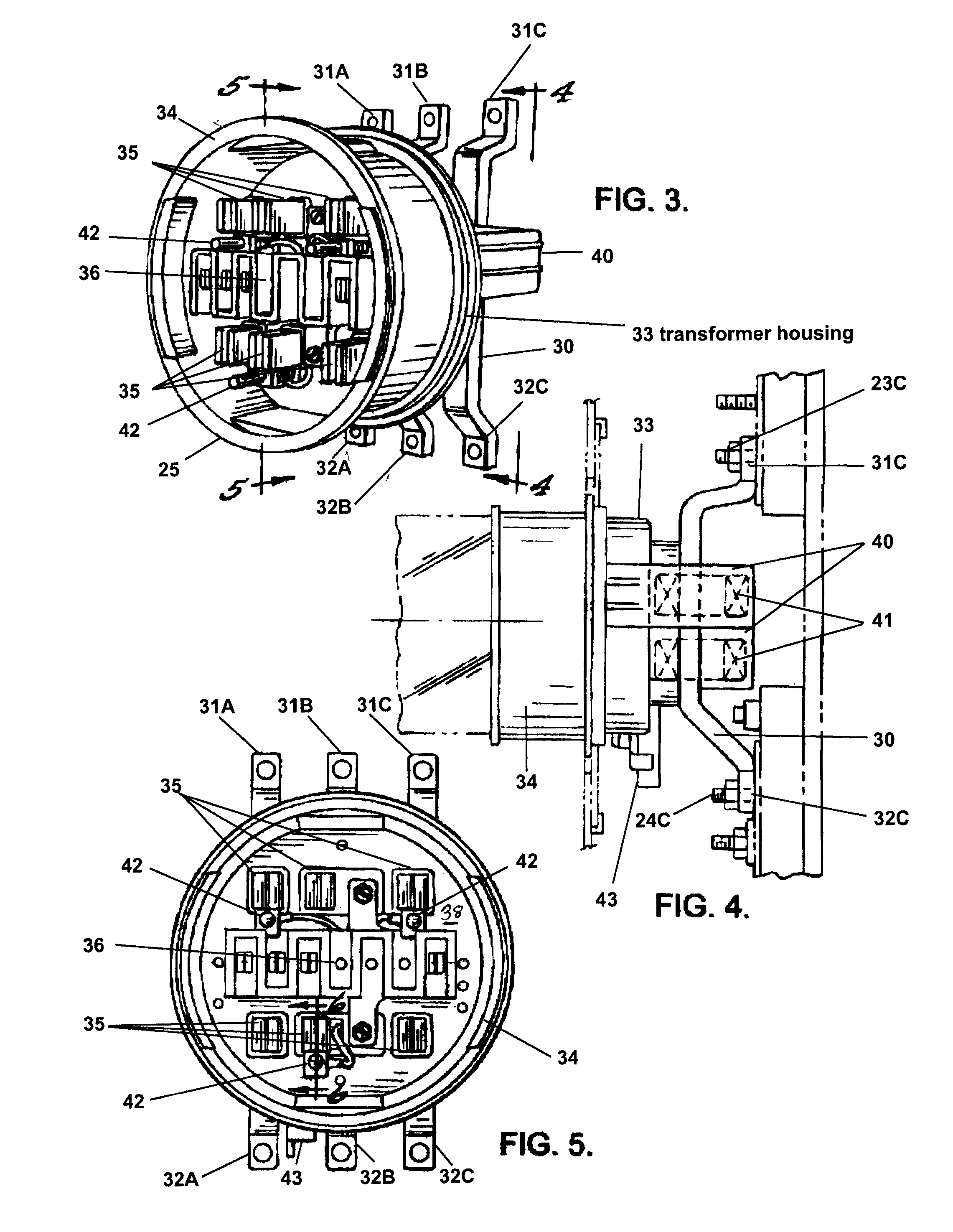Watt Hour Meter Socket Adapter with Current Transformer Housing Structure
a socket adapter and current transformer technology, applied in the field of socket adapters, can solve the problems of increasing the cost and space requirements of installation, adding current transformer boxes, and presenting a significant danger to the person working on site when bolting and unbolting the meter
- Summary
- Abstract
- Description
- Claims
- Application Information
AI Technical Summary
Benefits of technology
Problems solved by technology
Method used
Image
Examples
Embodiment Construction
[0029]The meter socket adapter 25 disclosed herein includes safety features previously unknown in the art. These features include, but are not limited to, separable housings for current transformers 41 and jaw contacts 35 allowing for portions of the adapter 25 to be accessed without removing the entire adapter from the circuit. The current transformer housing includes individual insulating compartments 40 for the transformers 41. The transformers 41 need less insulation around the secondary of the transformer 41 because the adapter of this invention includes insulation around the bus bars 30. The secondary of the transformer can be exposed because the transformer 41 is included within an insulating compartment 40 through which the bus bar 30 extends. The smaller transformer body allows for a more precisely measured current transformer housing 33 with dimensions that fit better and more securely within a meter socket 20. In this way, the high currents on the bus bars 30 and the mete...
PUM
 Login to View More
Login to View More Abstract
Description
Claims
Application Information
 Login to View More
Login to View More - R&D
- Intellectual Property
- Life Sciences
- Materials
- Tech Scout
- Unparalleled Data Quality
- Higher Quality Content
- 60% Fewer Hallucinations
Browse by: Latest US Patents, China's latest patents, Technical Efficacy Thesaurus, Application Domain, Technology Topic, Popular Technical Reports.
© 2025 PatSnap. All rights reserved.Legal|Privacy policy|Modern Slavery Act Transparency Statement|Sitemap|About US| Contact US: help@patsnap.com



